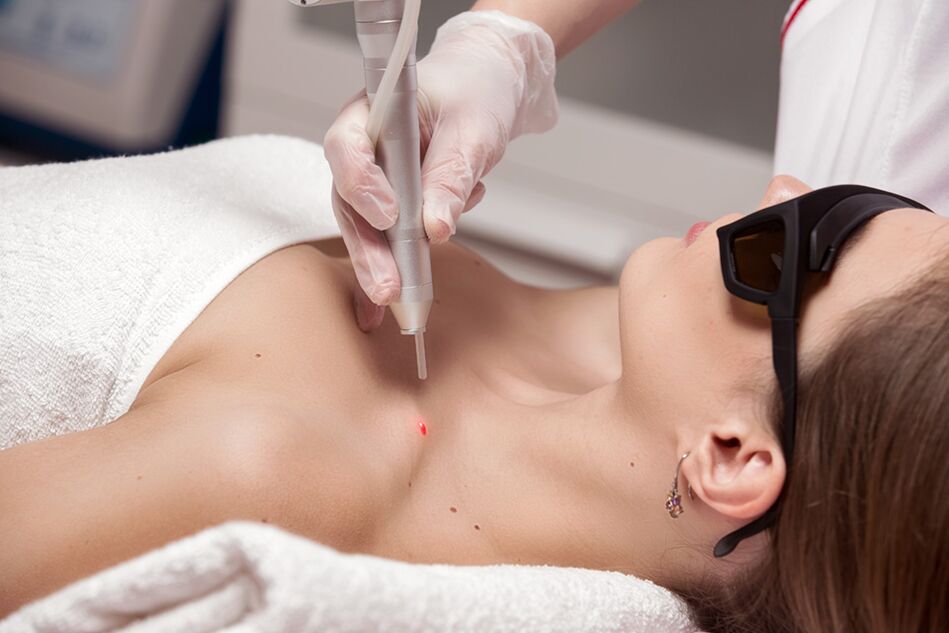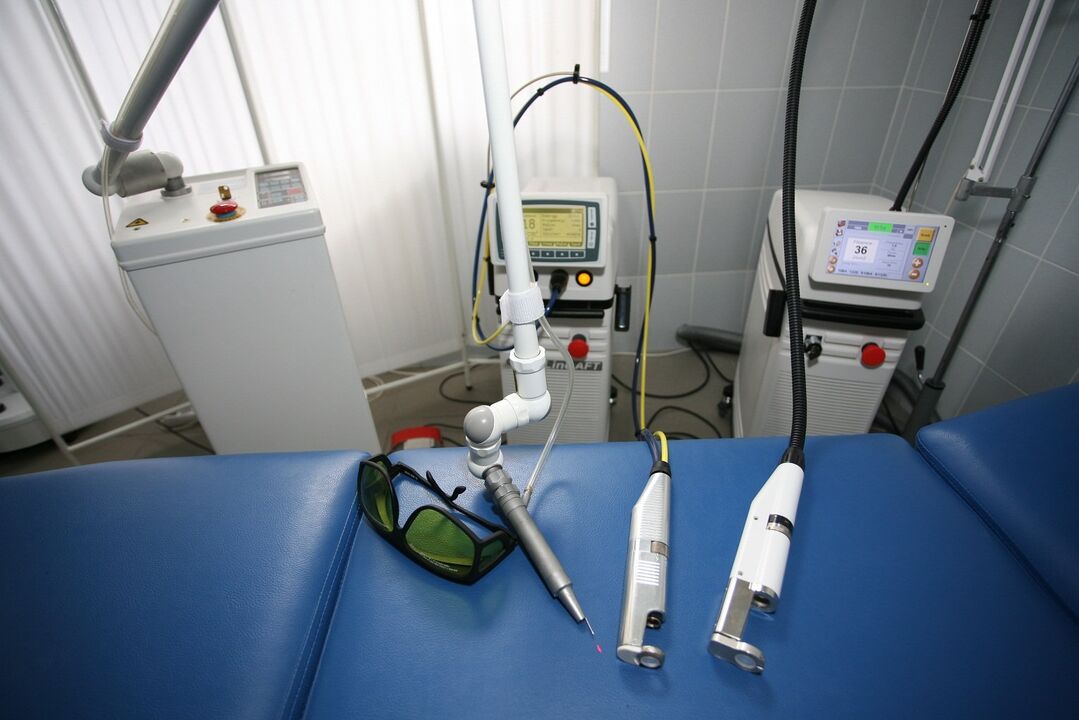Clinical manifestations of human papillomavirus infection are manifested in ugly wart formations on various parts of the skin of the body. Today, modern medicine and cosmetology offer many different methods for removing these growths. But the most effective way is laser wart removal, which is indicated for both adults and children.
As evidenced by numerous reviews, benign formations on the skin are burned by a laser painlessly and quickly. For the procedure, modern equipment is used, which allows you to precisely adjust the required depth of treatment of tissues damaged by a growth of warts. This eliminates the occurrence of relapses and the formation of ugly scars.
Purpose of laser wart removal
On any part of the human body, different types of warts can be burned off with a laser beam. These procedures are carried out in specialized medical centers using high-tech equipment by highly qualified specialists. This method is considered particularly effective in removing the following types of warts:

- apartment;
- plantar;
- Ordinary.
If there are no contraindications, the removal of benign skin growths with a laser beam is almost always prescribed when the formations are located in a prominent place. This is due to the high aesthetics of the procedure. That is, after the operation, healing proceeds quickly and does not leave scars.
Also, this method is indicated in cases where it is necessary to remove a wart in a hard-to-reach place. This is directly related to the characteristics of the equipment, which allows easy reconfiguration for any part of the body. Using a laser beam, a papilloma measuring up to 5 mm is cauterized. To remove large warts, it is recommended to use the electrocoagulation method.
Advice! In children, warts can be removed with a laser only after reaching the age of five, and only if such formations cause discomfort. This is due to the fact that with the growth of the child and the restructuring of his body, the growths can disappear on their own.
How is laser wart removal performed?
The laser wart removal procedure does not cause any discomfort and lasts no more than 5-7 minutes. The event consists of the following stages:

- Anesthesia. If the formation of warts has affected a large area of the skin, an anesthetic injection is administered. But usually the use of a special anesthetic ointment or gel is enough to relieve the pain.
- Deletion. A laser beam is directed at the wart and the benign formation is burned away. It is absolutely painless after anesthesia and the patient feels only a slight tingling sensation.
- Processing. A small wound is treated with an alcohol-free antiseptic, instead of which a solution of potassium permanganate can be used. After that, a regenerating antiseptic dressing is applied.
Advice! You should know that if the buildup has deep roots, cauterization with a laser beam is performed again after a few months. This prevents the occurrence of relapses.
To eliminate benign skin lesions, most often, various surgical CO2 lasers are used. Classically, they can be likened to a "scalpel" without contact. All actions are performed painlessly and ensure complete sterility due to the natural properties of the laser beam.

When exposed to a laser beam on a wart formation, coagulation of protein structures and layer-by-layer evaporation of damaged tissues occur. That is, after such treatment, all cells affected by the virus die. The laser beam ensures the "welding" of blood vessels along the edges of the wound, which guarantees a bloodless operation and excludes infection.
Advice! You should know that for several weeks before laser wart removal, it is not recommended to sunbathe or visit a solarium.
Contraindications for laser wart removal
Before removing warts by laser, it is necessary to undergo an examination to confirm the good quality of skin formation. Usually it is enough for a specialist to examine the tissue under a microscope, but if in doubt, a biopsy may be prescribed.
Advice! It should be remembered that cauterization of malignant tumors with a laser beam is strictly prohibited.
In addition, there are other contraindications, namely:
- Pregnancy and lactation period;
- Diabetes;
- Epilepsy and other diseases accompanied by convulsions;
- Immunodeficiency;
- Skin hypersensitivity and intolerance to applied anesthesia.
- Ultraviolet allergy.
Advice! During pregnancy, you can remove warts with a laser only if they cause discomfort. It can be growths or plantar formations located in places of friction. In this case, it is better to exclude the use of anesthesia, so as not to harm the unborn child.
Laser wart removal should be postponed if:
- Fever caused by bacterial or viral infection;
- high blood pressure;
- Exacerbation of chronic diseases;
- Exacerbation of herpes.
Restrictions after removal of warts
After the wart is laser removed, a small scab remains at the treatment site and there may be slight redness and swelling around the wound. A few days after the procedure, it is not recommended to take any measures, namely:
- Forcibly remove the resulting scab after laser irradiation;
- Apply any medical or cosmetic product to the healing surface;
- Wipe the wound after taking water procedures.

In addition, it is important after laser skin growth removal:
- Avoid prolonged exposure to the sun until the wound is completely healed;
- Do not visit common places such as baths, saunas or swimming pools.
- Avoid overheating or hypothermia of treated skin areas.
Subject to the rules of rehabilitation, you can count on the fact that the resulting crust will fall off on its own, after about two weeks. After that, in a month, the skin will completely recover, and there will be no traces left.
The only downside to laser wart removal is the rather high cost of the procedure. But at the same time, the price depends entirely on the size of the buildup, the depth of penetration of its roots, as well as the location of the benign formation. In this regard, we can say with confidence that in most cases the removal of warts at the initial stage of their development is quite affordable in its price.























